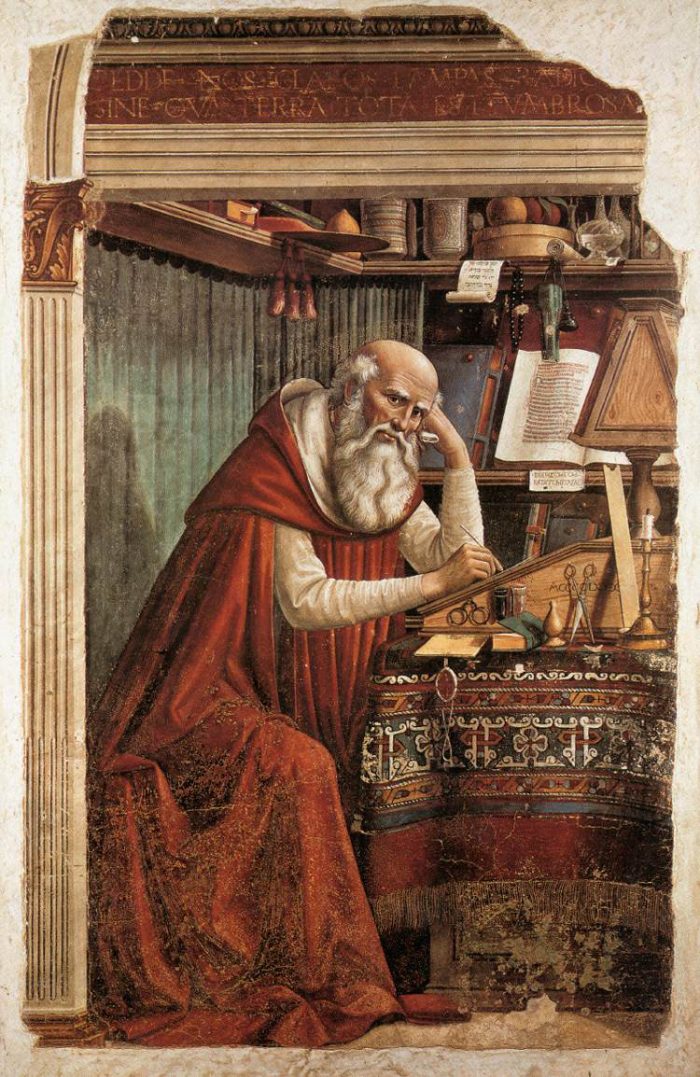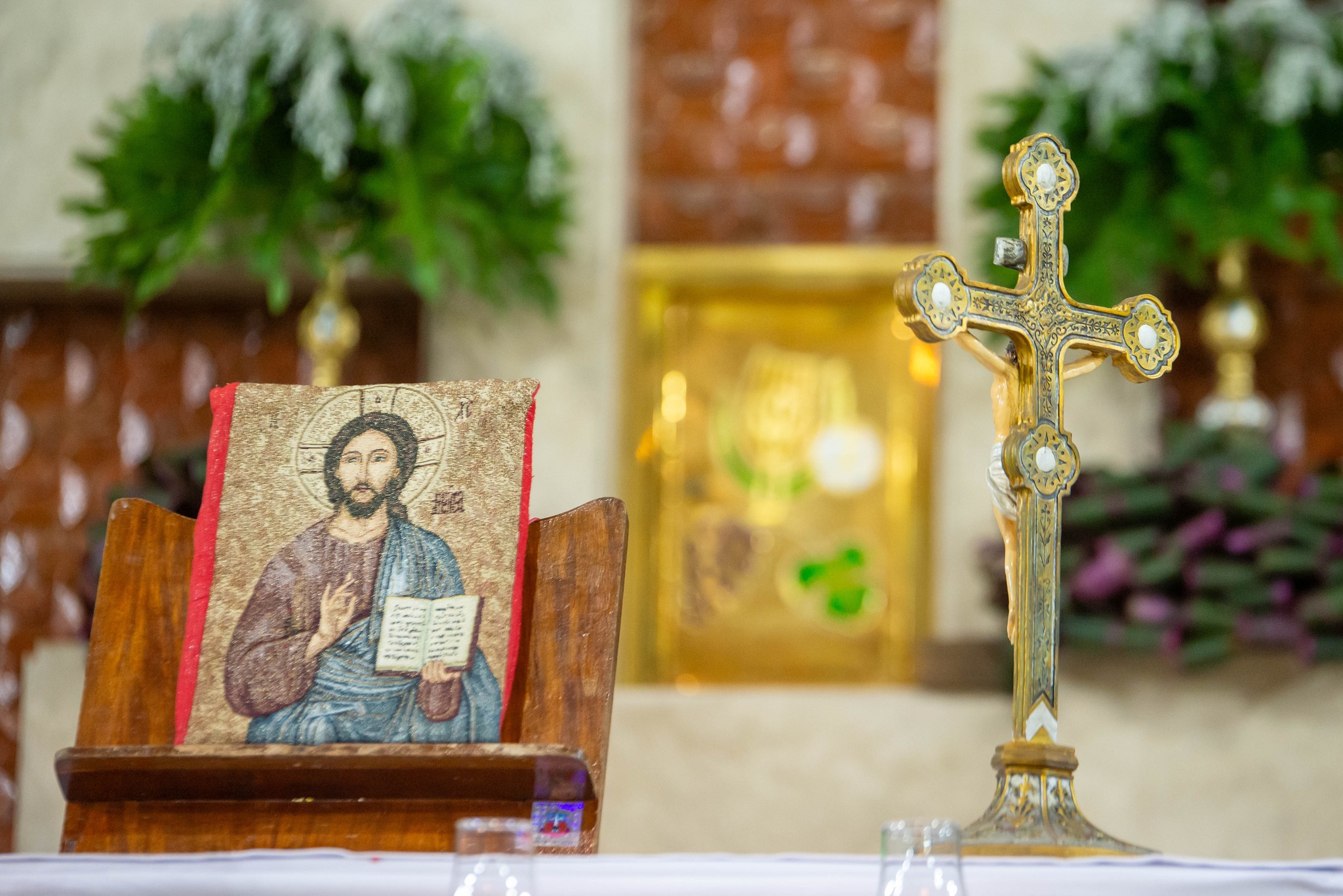Rev. José Mario O. Mandía
Saint Jerome, born in about 347 AD to a moderately wealthy Christian family, wrote that he was “son of Eusebius, of the city of Stridon, which is on the border of Dalmatia and Pannonia…” (De viris illustribus, Chapter 135). Stridon no longer exists and its exact location is not known but is probably in Croatia or Slovenia.
Jerome was first educated “at home by [his] father (also named Eusebius), and then his parents sent [him] to Rome (around 359 A.D.?) where Jerome studied under the famous pagan grammarian Ælius Donatus (who was possibly of African origin) and Victorinus, a Christian rhetorician. There he passed through a standard course of studies in classical literature and rhetoric (“St Jerome,” Stria on the Internet. https://www.istrianet.org/istria/illustri/jerome/index.htm).
His studies in Rome equipped Jerome with the mastery of both Latin and Greek. He began to build a library of his own by copying the works himself. He not only found pleasure in intellectual pursuits, but also in the sensual escapades and worldly entertainment of Rome. “As a young man,” Pope Benedict points out, Jerome “was attracted by the worldly life (cf. Letter 22, 7), but his desire for and interest in the Christian religion prevailed” (General Audience, 7 November 2007).
The pursuit of pleasure was not only one of the dark corners of his early life. Among the Fathers we have studied so far, probably none was as bad-tempered as Jerome. “Jerome had a quick temper, sarcastic tone and would often curse or use foul words when angered. He also had little patience for stupidity or shallowness. This caused him to make a number of enemies throughout his life, particularly in Rome where he was disliked by both the clergy and pagan officials. To combat this sin of wrath, Jerome would carry a stone with him wherever he went. Anytime he cursed or committed a sin against charity, he would use the stone to beat his chest as penance for his actions. By the end of his life, his chest developed calluses and scars from the frequency of the thrashings” (“St Jerome – Biblical Scholar,” Saint Mary. https://stmaryrockledge.org/st-jerome-biblical-scholar-2/) Thus, we learn from his example how to repent and “beat our breasts” not only physically but also spiritually. He taught us what sorrow for sin means.
Jerome had a great desire to change. To strengthen his resolve, he would go with his friends to visit the tombs of the martyrs in the catacombs. In his Commentary on Ezechiel, Jerome wrote: “Often I would find myself entering those crypts, deep dug in the earth, with their walls on either side lined with the bodies of the dead, where everything was so dark that almost it seemed as though the Psalmist’s words were fulfilled, ‘Let them go down quick into Hell’ (Psalms 55:15)” (Jerome, Commentarius in Ezechielem, c. 40, v. 5). He did this every Sunday, even if he was not yet a Christian. The experience frightened him, but it did not bring about the conversion he desired.
God, however, provided Jerome with a very good friend, Bonosus. Bonosus had also attended the classes given by Jerome’s father at home, and was also with Jerome when he went to Rome to study. Bonosus was a treasure of a friend. His influence helped persuade Jerome to become a Christian and to change for the better (cf. https://www.catholic.org/saints/saint.php?saint_id=10). Finally, Jerome was baptized by Pope Liberius in 366.
Jerome’s conversion through his friend’s help makes us see the role of friendship in transmitting the Good News. Indeed, friendship itself is not only part of the Good News, but is the core of it: “No longer do I call you servants, for the servant does not know what his master is doing; but I have called you friends, for all that I have heard from my Father I have made known to you” (John 15:15). “Now the consciousness of this friendship of Jesus Christ is the very secret of the Saints” (Robert Hugh Benson, The Friendship of Christ, p. 6).
Already in the Old Testament, friendship is praised. “A faithful friend is a sturdy shelter: he that has found one has found a treasure. There is nothing so precious as a faithful friend, and no scales can measure his excellence” (Ecclesiasticus/Sirach 6:14-15).
What did Bonosus do to bring Jerome to the faith? He simply lived the Christian virtues consistently. “You can see immediately that the practice of these virtues leads to apostolate. In fact, it already is apostolate. For when people try to live in this way in the middle of their daily work, their Christian behavior becomes good example, witness, something which is a real and effective help to others. They learn to follow in the footsteps of Christ, who ‘began to do and to teach’ (Acts 1:1), joining example to word. That is why, for these past forty years, I have been calling this apostolate an ‘apostolate of friendship and confidence’.” (St Josemaría Escrivá, Conversations, no 62). This unostentatious apostolic style can be put into practice by any Christian who desires that his or her friends “may have fellowship with us; and our fellowship is with the Father and with his Son Jesus Christ” (I John 1:3).


 Follow
Follow


